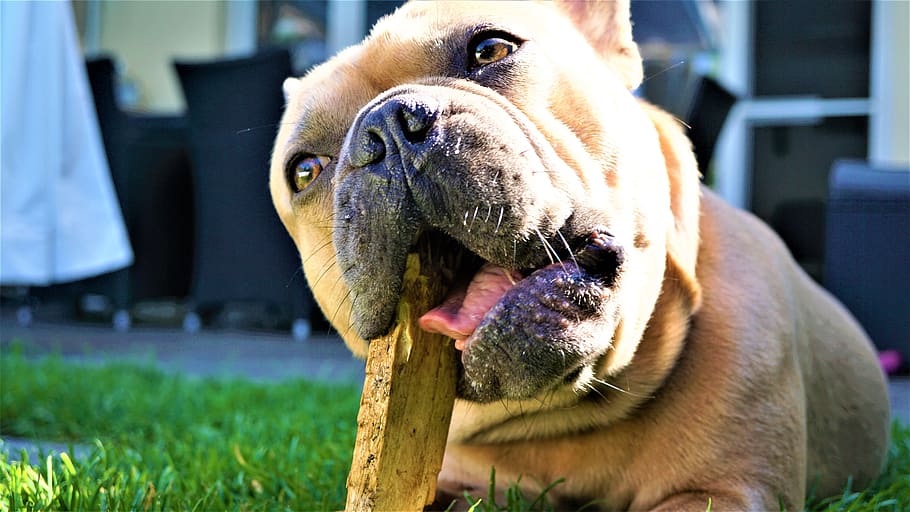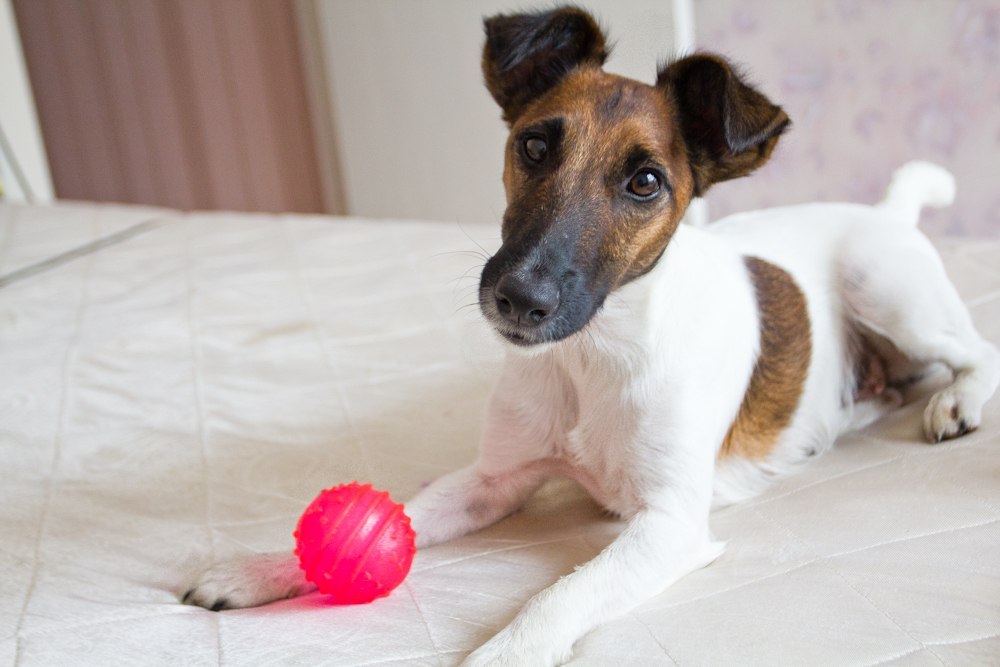It’s difficult for us to transition to a lifestyle of containment. We may feel stressed, bored, or anxious. Guess what? Your dog feels the same way! Just as we develop coping mechanisms for these tough times, we have to help our dogs develop ways to manage their feelings of boredom and anxiety. Here are a few tips for helping your pup stay relaxed during these trying times.
Management
Some behaviors our dogs do are just inherently fun. Chewing, digging, chasing and counter surfing (stealing food off counters) are considered self-reinforcing. Before you can teach your pup an alternate behavior, you need to prevent them with management. The fewer opportunities we give our dogs to practice unwanted behaviors, the better. For example if your dog is chewing your shoes, make sure your shoes are put away and provide access to plenty of chew toys. If your dog likes to steal food off the counter, either make sure food is put away or limit your dog’s access to the kitchen.
Maintain a Consistent Schedule and Routine
While our world has been turned upside down, it’s important to maintain a consistent schedule and routine. Predictability makes life feel easier and safer. Anxiety can increase when the dog doesn’t know what is going to happen from moment to moment. Stick to a regular routine even though you’re home all the time and schedule time to spend with the dog as well as time away. A consistent schedule will help the dog maintain a consistent sleep and activity routine. The proper amount of sleep, activity, and mental stimulation can support health and mood.
Identify What Your Dog Likes To Do

Find what your dog finds rewarding. What are the things your dog loves to do? Does your dog like to tear things up, chew, dig, sniff, etc? Once you identify what is fun for your dog, we can use those things as inspiration for enrichment.
Provide Human-Acceptable Outlets for Doggy Mischief (Enrichment)

Scavenger hunt
Instead of feeding your dog out of a bowl, hide the food in 3 to 5 Kongs or other types of food puzzles. Then hide the food around your apartment or home. You can limit it to one room of the home if you don’t want to make the entire house messy. If your dog is not into Kongs, then place the food into 3 to 5 bowls and hide them. If you have a grassy yard, you can scatter kibble or treats in the grass and let your dog go forage for breakfast or dinner.
A place to dig
If you have an outdoor space, you can create a dig box by filling up a bin with sand or soil (sand is a little cleaner) and burying treats and toys in it. Then, encourage your dog to dig for the goodies. You can also designate a small section of the yard about 3’ x 3’ as your dog’s dig area and bury treasure for your dog to find.
Box full of paper and items your dog can destroy
Take a medium- to large-size cardboard box or bin. Crumple up some brown wrapping paper. Place the paper inside the box and hide toys, kibble, or treats. Let your dog dig for the goodies. Alternatively, you can also place all of your dog’s toys and balls inside the box and hide kibble or treats in it. You can also take toilet paper or paper towel tubes, hide treats inside, fold up the ends, and then hide them in the box.
Chase games
Get a flirt pole and let your dog chase the toy at the end of it. You can play this game indoors or outdoors. If you play indoors, it may be a good idea to push some furniture out of the way to create more space for chasing. You can also create your own chase toy by tying a toy to the end of a rope and then swing it around for your dog to chase.
Addressing Attention-Seeking Behavior

The only creatures winning during the “shelter in place” order are our pets, and they excel when it comes to getting our attention. Now that you’re home, your pup is likely pestering you for attention during important meetings. When our pups do things that we don’t like, we are very quick to react. This often means accidentally reinforcing unwanted behavior with attention. We may look at them, yell at them, or engage with them in other ways. Whoops.
It is common for people to punish their dogs for attention-seeking behavior. The problem is that punishment may suppress behavior in the moment, but there can be unwanted or even dangerous side effects including an increase in fear, anxiety, or aggression. In addition, punishment doesn’t teach the dog what we want them to do. It can add more confusion and frustration overall. In some cases, the punishment itself is reinforcing because the dog is eliciting a response from you. Negative attention can be better than no attention at all.
We are all human. It is virtually impossible for anyone living with a dog to completely ignore all attention-seeking behaviors. It’s OK to acknowledge that you will inadvertently reinforce attention-seeking behavior. Attention-seeking behaviors occur simply because they work. Moreover, it is difficult to completely get rid of the behavior because sometimes it works and sometimes it doesn’t. Think of a slot machine – people will continue to play the game even if they lose most of the time because sometimes they win. If the dog “wins” just some of the time at eliciting some form of attention from you, the behavior will likely continue to occur.
If your dog exhibits an annoying attention-seeking behavior, try to change the subject and then redirect. Walk into the bathroom, close the door, and come back out after 30-60 seconds. In some situations, you may need to put up a barrier to keep the dog out of the home office. Then redirect the dog to do something else in the moment to keep busy and remind yourself to be better prepared next time by providing a better outlet for your dog’s energy through exercise and enrichment.
Being proactive with management is key to get us out of this cycle, but it’s only the first step. In order to truly resolve the issue, we need to make it a habit to reinforce calm behavior whenever it occurs in real life.
Calm and quiet behavior is easy to miss so here are two tips:
- Set a timer to go off silently on your phone. When it does – go find your dog. If they’re chill, initiate a petting or play session.
- Make a list of 3-5 desired behaviors you want your dog to exhibit. When you see it occur – especially when it’s not asked – reward your dog with a little treat, petting, play, or quiet praise.
Behavior Vets is offering a Homebound Hounds webinar aimed at providing solutions to some of your dog’s problems. Sign up here!
After this webinar you will learn how to:
- Relieve your pup’s boredom and excess energy
- Address your dog’s anxiety because of the change in routine
- Keep your dog occupied with mental challenges so they will leave you alone while you’re busy
- Keep your pup content, relaxed, polite, and calm
To get you started, or to help you stay on track, your Behavior Consultant can also coach you virtually. If you are not already sharing videos and tracking sheets with your professional, ask them to get you started. We have virtual coaching packages and online training classes that you can follow at your own pace.
To get started with our tele-training classes either email us at nyc@behaviorvets.com or call us at 646-661-1001. We look forward to seeing you online.
© 2020

